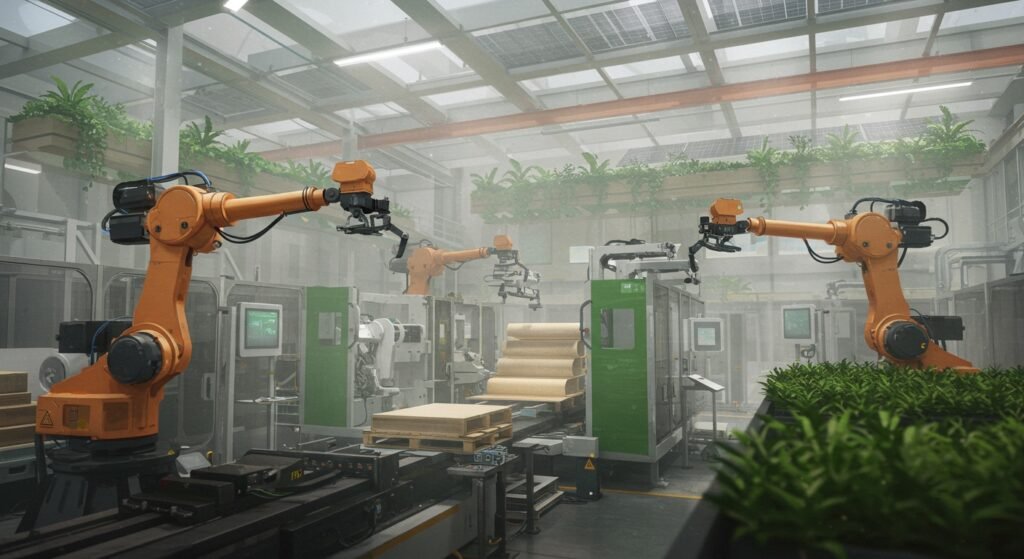In an era defined by increasing environmental consciousness and resource scarcity, the adoption of Green Manufacturing Techniques has become not just a desirable goal, but a critical imperative for industries worldwide. These innovative approaches aim to minimize environmental impact throughout the entire product lifecycle, from design and raw material sourcing to production, use, and end-of-life disposal. By integrating sustainability into their core operations, companies can achieve significant reductions in waste, energy consumption, and pollution, while simultaneously enhancing efficiency and fostering a positive brand image.
Table of Contents
- What Are Green Manufacturing Techniques?
- Key Principles of Sustainable Production
- Innovative Green Manufacturing Techniques in Practice
- Benefits of Adopting Green Manufacturing
- Challenges and Future Outlook
What Are Green Manufacturing Techniques?
Green Manufacturing Techniques encompass a broad spectrum of strategies and practices designed to reduce negative environmental impacts while enhancing economic competitiveness. At its heart, it’s about creating products and processes that are environmentally friendly, conserve natural resources, and are safe for employees, communities, and consumers. This holistic approach considers every stage of a product’s life, aiming for a “cradle-to-cradle” instead of a “cradle-to-grave” philosophy.
This includes minimizing waste generation, conserving energy and natural resources, avoiding toxic materials, and designing products for durability, reuse, and recyclability. It’s a fundamental shift from traditional linear production models to more circular and sustainable ones, driven by both regulatory pressures and growing consumer demand for eco-conscious products. Understanding these techniques is crucial for any business looking to thrive in the 21st century industrial landscape.
Key Principles of Sustainable Production
Several core principles underpin effective green manufacturing initiatives:
- Waste Reduction: Focus on minimizing waste at every stage, from raw materials to finished goods, often employing lean manufacturing principles.
- Energy Efficiency: Optimizing energy use, transitioning to renewable energy sources, and recovering waste heat.
- Material Optimization: Using recycled, recyclable, non-toxic, and renewable materials. Designing products that require fewer materials.
- Pollution Prevention: Eliminating or reducing harmful emissions and discharges to air, water, and land.
- Product Lifecycle Management: Designing products for longevity, ease of repair, disassembly, and eventual recycling or composting.
- Supply Chain Sustainability: Collaborating with suppliers who also adhere to green practices.
- Social Responsibility: Ensuring fair labor practices, safe working conditions, and positive community engagement.
Adhering to these principles not only benefits the environment but often leads to significant operational cost savings and improved public relations.
Innovative Green Manufacturing Techniques in Practice
Many industries are now actively implementing cutting-edge Green Manufacturing Techniques. Here are some prominent examples:
Additive Manufacturing (3D Printing)
3D printing significantly reduces material waste compared to subtractive manufacturing processes like machining. It allows for the creation of complex geometries with less raw material, and on-demand production can reduce inventory and associated energy consumption for storage and transport. Furthermore, localized production through 3D printing can shorten supply chains, leading to lower carbon emissions from logistics.
Lean Manufacturing
While not exclusively “green,” lean principles inherently support sustainability by eliminating waste (Muda) in all its forms: overproduction, waiting, unnecessary transport, over-processing, excess inventory, unnecessary motion, and defects. By optimizing processes and reducing inefficiencies, lean manufacturing naturally leads to reduced energy consumption, material waste, and resource utilization.
Renewable Energy Integration
Factories are increasingly powering their operations with renewable energy sources such as solar, wind, and geothermal. This direct shift away from fossil fuels drastically cuts carbon emissions. Companies like Apple and Google have made significant strides towards powering their operations entirely with renewable energy. For more insights on sustainable practices, you might want to read our article on Circular Economy Principles.
Water Conservation and Wastewater Treatment
Many manufacturing processes are water-intensive. Green techniques include closed-loop water systems, advanced filtration, and purification technologies that allow for the reuse of water, significantly reducing fresh water consumption and preventing discharge of pollutants. For instance, textile dyeing facilities are implementing technologies to reuse up to 90% of their water.
Eco-Design and Material Substitution
Designing products with their environmental impact in mind from the very beginning. This includes selecting biodegradable or recycled materials, designing for easy disassembly and repair, and reducing the number of components. Companies are also exploring innovative materials like bio-plastics or composites made from agricultural waste.
Benefits of Adopting Green Manufacturing
The transition to green manufacturing offers a multitude of advantages beyond just environmental stewardship:
| Benefit Category | Specific Advantage |
|---|---|
| Environmental | Reduced Carbon Footprint, Minimized Waste, Conserved Resources, Lower Pollution |
| Economic | Lower Operating Costs (Energy, Materials), Enhanced Brand Reputation, New Market Opportunities, Regulatory Compliance Avoidance |
| Social | Improved Worker Safety, Positive Community Relations, Attract and Retain Talent |
| Competitive | Innovation Driver, Differentiation from Competitors, Resilience to Resource Scarcity |
These benefits collectively contribute to a more resilient, profitable, and responsible business model. A study highlighted by the Environmental Protection Agency (EPA) frequently underscores the long-term economic gains from sustainable industrial practices.
Challenges and Future Outlook
Despite the clear advantages, implementing green manufacturing isn’t without its challenges. Initial investment costs for new technologies, the complexity of supply chain transformation, and the need for new skills and training can be significant hurdles. Furthermore, regulatory landscapes can be inconsistent across different regions, posing compliance challenges for global operations.
However, the future of green manufacturing looks promising. Advances in AI, IoT, and automation will further enhance efficiency and resource management. The growing demand for sustainable products from consumers and investors will continue to drive innovation. Governments worldwide are also increasingly offering incentives and enacting policies that support eco-friendly industrial practices. As industries mature and technologies become more accessible, Green Manufacturing Techniques will become the norm, not the exception, leading to a truly sustainable industrial future.
Conclusion
The imperative to adopt Green Manufacturing Techniques is undeniable. They offer a powerful pathway for industries to achieve economic prosperity while safeguarding the planet. By embracing waste reduction, energy efficiency, sustainable materials, and innovative production methods, businesses can not only comply with environmental regulations but also unlock new avenues for innovation, cost savings, and market leadership. The journey towards a greener industrial future is ongoing, but the foundation laid by these techniques promises a more sustainable and prosperous world for generations to come.


